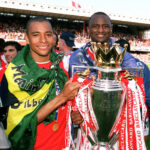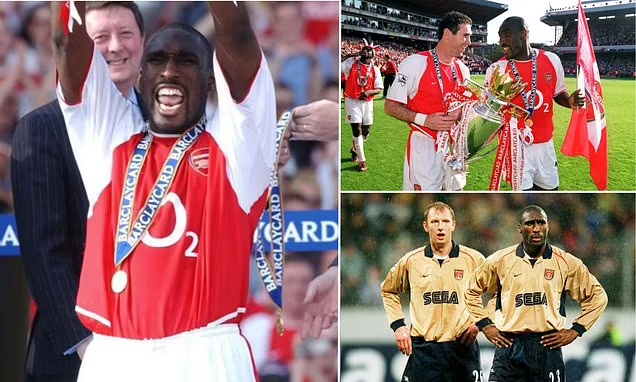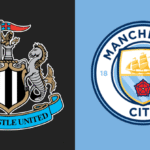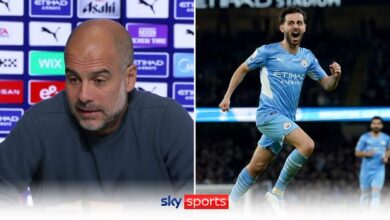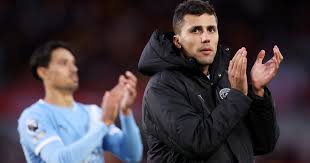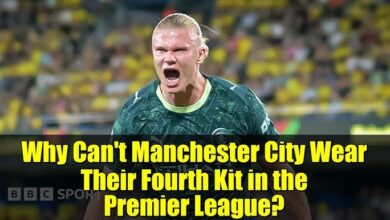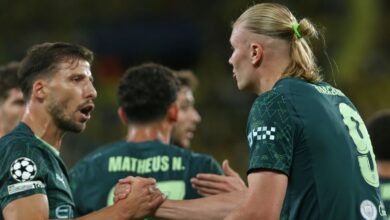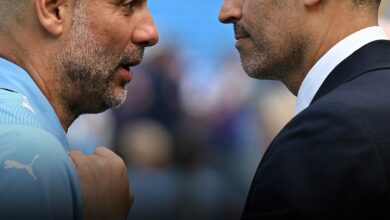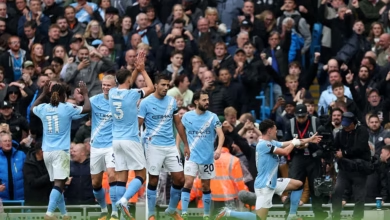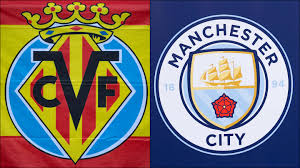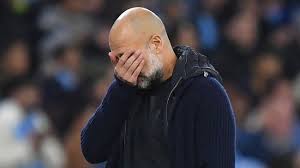Arsenal’s Strategic Transfer Evolution: Building a Championship Squad Under Mikel Arteta
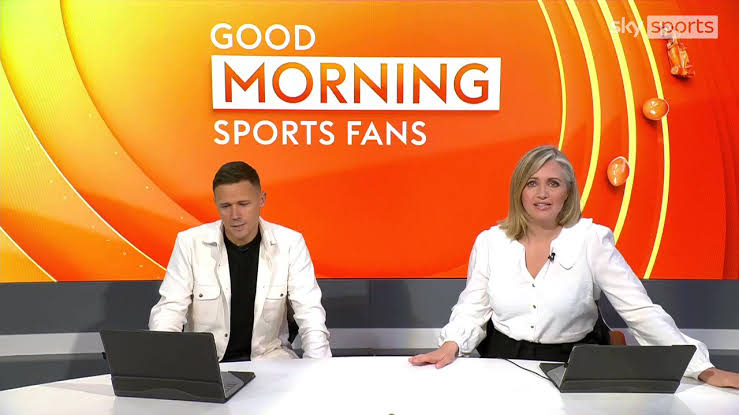
Arsenal Football Club stands at a critical juncture in their storied history. Under the meticulous guidance of Mikel Arteta, the Gunners have transformed from a team in transition to genuine Premier League title contenders. After consecutive second-place finishes, the North London club finds itself in a familiar position—tantalizingly close to greatness yet still searching for that final piece of the puzzle that will deliver their first Premier League title since the Invincibles of 2003-04.
The 2025 summer transfer window represents more than just another opportunity to strengthen the squad; it embodies Arsenal’s philosophical evolution under Arteta’s leadership. The Spanish manager has systematically rebuilt the team’s identity, combining tactical sophistication with strategic recruitment to create a cohesive unit capable of competing with Manchester City and other elite European clubs. This comprehensive analysis examines Arsenal’s transfer strategy, focusing on their pursuit of key targets and the broader implications for their championship ambitions.
Mikel Arteta’s approach to squad building reflects his deep understanding of modern football’s complexities. Having worked under Pep Guardiola at Manchester City, Arteta has implemented a possession-based philosophy that demands specific player profiles and characteristics. This tactical framework directly influences Arsenal’s transfer strategy, with every potential signing evaluated through the lens of system compatibility and long-term vision.
The evolution of Arteta’s tactical approach has been remarkable. Initially focusing on defensive solidity and structural organization, Arsenal has gradually developed into an attacking force capable of dominating possession while maintaining defensive discipline. This transformation requires players who can excel in multiple phases of the game—defenders who can contribute to build-up play, midfielders who can press aggressively and create chances, and forwards who can link play while providing clinical finishing.
The current transfer strategy reflects this tactical maturity. Arsenal chief Josh Kroenke revealed plans to invest while Mikel Arteta said he has goosebumps about their plans, indicating the club’s commitment to supporting their manager’s vision with significant financial backing. This alignment between ownership, management, and sporting strategy creates the foundation for sustained success
The pursuit of Crystal Palace’s Eberechi Eze represents a fascinating case study in Arsenal’s modern transfer approach. Arsenal are confident of reaching a full agreement to sign Crystal Palace superstar Eberechi Eze this summer, with the England international emerging as a priority target for Arteta’s attacking evolution. Eze’s profile perfectly aligns with Arsenal’s tactical requirements. The versatile forward can operate across multiple positions in the front three, offering the flexibility that modern football demands. His ability to create from wide areas while drifting centrally to overload the final third makes him an ideal fit for Arteta’s fluid attacking system. The technical quality that saw him contribute significantly to Crystal Palace’s FA Cup triumph demonstrates his capacity to perform in high-pressure situations—a crucial attribute for a team with championship ambitions.
One ‘internal concern’ is the reason for Eberechi Eze’s proposed move from Crystal Palace to Arsenal being delayed, highlighting the complex nature of modern transfer negotiations. This hesitation likely reflects Arsenal’s meticulous approach to recruitment, ensuring every signing aligns with their long-term strategy rather than pursuing short-term fixes.
The financial aspect of the Eze pursuit reveals Arsenal’s evolved position in the transfer market. Although Eze has a £67.5m release clause in his contract at Palace, Arsenal look to be moving towards an agreement to pay it in instalments, demonstrating both their financial capability and strategic approach to structuring deals. This method allows Arsenal to secure top-tier talent while maintaining fiscal responsibility—a balance that has become increasingly important in modern football’s economic landscape.
Arsenal’s pursuit of Eze occurs within a competitive market environment. Arsenal will go up against London rivals Tottenham Hotspur for Crystal Palace forward Eberechi Eze, illustrating how top-tier talent attracts multiple suitors. This competition forces Arsenal to present compelling packages that extend beyond financial considerations to include sporting vision, development opportunities, and pathway to success.
The dynamics of London-based transfers add another layer of complexity. Players often have preferences regarding location, lifestyle, and club culture that can influence their decisions regardless of financial offers. Arsenal’s recent progress under Arteta, combined with their historical prestige and modern facilities, provides advantages in these negotiations. The club’s ability to offer Champions League football and genuine title contention represents significant draws for ambitious players.
Sources have confirmed to us that Eze is very happy with the provisional contract offer Arsenal have sent him, suggesting that Arsenal’s package resonates with the player’s ambitions. This personal buy-in from the player often proves decisive in transfer negotiations, particularly when multiple clubs are involved.
Arsenal’s transfer strategy under Arteta emphasizes strategic acquisitions rather than wholesale changes. This approach recognizes the importance of squad chemistry and tactical familiarity in achieving sustained success. Rather than disrupting a functional system with numerous new arrivals, Arsenal focuses on identifying specific areas for improvement and targeting players who can elevate the existing framework.
Mikel Arteta has vowed Arsenal will make further signings in the transfer market and hinted at more new arrivals, indicating a measured approach to strengthening the squad. This strategy requires patience and precision, as each signing must complement the existing players while adding new dimensions to the team’s capabilities.
The emphasis on tactical fit over marquee names reflects Arsenal’s maturation as a football project. Previous transfer windows might have prioritized star power or commercial appeal, but Arteta’s Arsenal focuses on players who can contribute immediately to their system while possessing the character and mentality required for championship challenges.
Arsenal’s approach to transfer finances demonstrates sophisticated planning that balances immediate needs with long-term sustainability. The club’s ability to structure deals through installments and creative financial arrangements allows them to compete for top-tier talent while maintaining fiscal responsibility. This approach becomes particularly important given Financial Fair Play regulations and the economic realities of modern football.
Arsenal could sign Eberechi Eze in a discounted deal this summer with Crystal Palace now open to taking a player in exchange, illustrating the creative solutions modern clubs employ to structure transfers. Player exchanges and swap deals can provide mutual benefits, allowing selling clubs to acquire talent while buyers manage their cash flow requirements.
The long-term perspective of Arsenal’s financial strategy extends beyond individual transfer windows. By building a squad of players entering their prime years, the club creates both sporting and commercial value. These players can contribute immediately while retaining significant market value, providing flexibility for future transfer activities.
The success of any transfer strategy ultimately depends on how new signings integrate into the existing tactical framework. Arteta’s possession-based system requires specific technical and mental attributes that not all players possess. The ability to play under pressure, make quick decisions in tight spaces, and maintain composure in crucial moments separates players who can thrive in this system from those who merely survive.
Eberechi Eze is one of the forward options being considered by Arsenal; the Gunners retain an interest in Real Madrid’s Rodrygo, demonstrating the club’s comprehensive evaluation of attacking options. This approach ensures that Arsenal doesn’t become fixated on individual targets but maintains flexibility to pursue alternative options that might better serve their tactical needs.
The integration process extends beyond the training ground to encompass the broader club culture. Arsenal’s recent success stems partly from creating an environment where players can express themselves creatively while understanding their responsibilities within the collective framework. New signings must adapt not only to tactical requirements but also to the club’s values and expectations
Arsenal’s transfer activities occur within the broader context of Premier League competition and European football dynamics. The club must navigate the challenges of competing against financially powerful rivals while building a sustainable model for long-term success. This balance requires strategic thinking that extends beyond individual transfer windows to encompass multi-year planning cycles.
Arsenal are already planning for next season, but Mikel Arteta’s apparent willingness to buy more defensive players rather than attackers is concerning, highlighting the ongoing debates surrounding squad priorities. These discussions reflect the complexity of modern squad building, where every decision has implications for tactical balance, squad harmony, and future flexibility.
The global nature of modern football markets adds another dimension to Arsenal’s strategy. The club must compete not only with domestic rivals but also with European giants who can offer different attractions—whether historical prestige, immediate success opportunities, or lifestyle considerations. Arsenal’s ability to present a compelling sporting project becomes crucial in attracting and retaining top-tier talent.
Arteta’s approach to squad development encompasses both immediate acquisitions and long-term player development. The integration of young talents like Bukayo Saka and the emergence of academy products reflects a holistic approach to squad building that balances present needs with future potential. This philosophy influences transfer strategy by creating opportunities for younger players while ensuring experienced reinforcements can provide immediate impact.
The development pathway at Arsenal has become increasingly attractive to ambitious young players seeking opportunities at elite clubs. The combination of world-class facilities, excellent coaching, and genuine opportunities for progression creates a compelling proposition that extends beyond financial considerations. This reputation enhances Arsenal’s position in transfer negotiations, particularly when competing for younger talents who prioritize development opportunities.
Modern transfer strategy requires sophisticated risk management approaches that account for various scenarios and potential complications. Arsenal’s pursuit of multiple targets in similar positions reflects this strategic thinking, ensuring the club isn’t left vulnerable if primary targets become unavailable or negotiations stall.
The contingency planning extends to financial considerations, with the club maintaining flexibility to adjust spending based on incoming revenue streams, player sales, and unexpected opportunities. This adaptability has become increasingly important in modern football’s volatile transfer environment.
The cultural dimension of Arsenal’s transfer strategy often receives less attention than tactical or financial aspects, yet it plays a crucial role in long-term success. Arteta has emphasized the importance of character and mentality in his recruitment decisions, recognizing that technical ability alone doesn’t guarantee success in high-pressure environments.
The leadership qualities of potential signings become particularly important for a club with championship ambitions. Players who can perform under pressure, inspire teammates, and maintain standards during difficult periods provide value that extends beyond statistical contributions. This cultural fit assessment influences Arsenal’s evaluation process and helps explain why certain transfers progress while others stall despite apparent suitability on paper.
Arsenal’s approach to transfer timing demonstrates strategic sophistication that recognizes market dynamics and negotiation rhythms. Rather than rushing into deals early in transfer windows, the club often allows situations to develop while maintaining active dialogue with targets and their representatives. This patience can provide advantages as selling clubs adjust their expectations and alternative options emerge.
As Arsenal focus on winning now and throwing money at the summer transfer window, are they sabotaging their long-term Premier League hopes? This question highlights the delicate balance between immediate ambition and sustainable development. Arsenal’s challenge lies in making strategic investments that provide immediate improvement while maintaining the flexibility and resources necessary for continued evolution.
Arsenal’s transfer strategy under Mikel Arteta represents a sophisticated approach to squad building that balances multiple competing priorities. The pursuit of players like Eberechi Eze demonstrates the club’s commitment to improving their attacking options while maintaining tactical coherence and cultural fit. This comprehensive approach extends beyond individual signings to encompass broader strategic objectives including youth development, financial sustainability, and competitive positioning.
The success of this strategy will ultimately be measured not just in individual performances but in collective achievement. Arsenal’s ability to consistently compete for major trophies while maintaining their distinct playing style and cultural identity represents the true test of their transfer philosophy. The current transfer window provides an opportunity to add the final pieces to a carefully constructed puzzle, potentially delivering the championship that has eluded the club for two decades.
As Arsenal continues to evolve under Arteta’s guidance, their transfer strategy serves as both a reflection of their current ambitions and a blueprint for future success. The careful balance of immediate needs and long-term vision, combined with tactical sophistication and cultural awareness, positions the club well for sustained excellence in an increasingly competitive football landscape. The pursuit of players like Eze represents more than just squad strengthening—it embodies Arsenal’s transformation into a championship-caliber organization capable of competing with Europe’s elite clubs.
